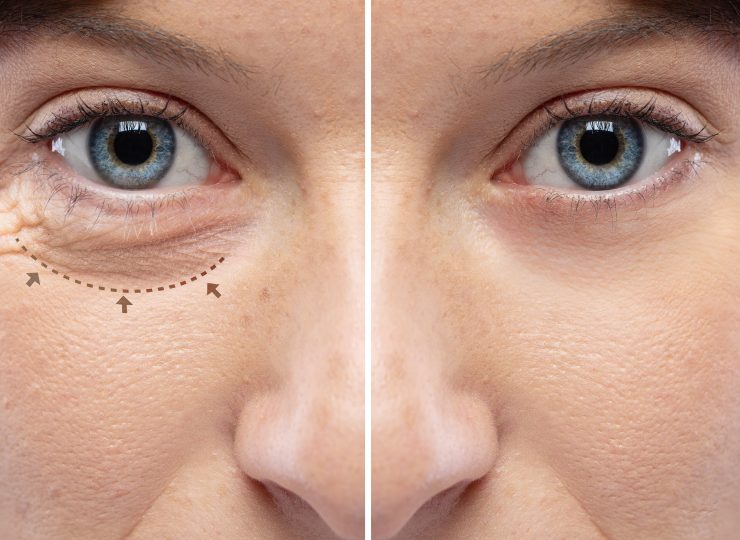
Aesthetic, Plastic and Reconstructive Surgery
Although aesthetic surgery accounts for the majority of plastic surgery, is plastic surgery also includes reconstructive surgery, hand surgery, craniofacial surgery, microsurgery, and burn treatment. Reconstructive surgery is the repair of any acquired or congenital tissue and organ loss that affects the skin, subcutaneous tissue, and surface bones of the body. This surgical discipline includes, for example, vascular masses such as tied fingers (syndactyly), traumatic burns, various cuts and lacerations, chronic wounds, hemangiomas. Aesthetic/cosmetic surgery includes operations and attempts to further beautify and perfect the body image. The main purpose here is to eliminate aesthetic concerns.
Which Diseases Does Aesthetic, Plastic and Reconstructive Surgery Department Treat?
- Congenital or acquired deformities (cleft lip, cleft palate, congenitally attached fingers)
- Open wounds after trauma and diseases
- Post-traumatic facial bone fractures and surgical treatment
- Skin cancers and surgical treatment
- Post-traumatic functional disorders of the hand and Hand Surgery
- Microsurgery (Tissue transplants, nerve and vessel repairs)
- Surgical treatment of skin tumors (moles, moles)
- Eyelid disorders
- Burns and scars that cause deformities

Mammaplasty and Breast Reconstruction
Today, many women who are undergoing breast cancer treatment, are having one or two of their breasts surgically removed. Plastic surgery can be used to reconstruct the breast upon the oncologist’s approval. Breast reconstruction can be performed at the same time as oncological surgery or after all treatments have been completed. The patient’s own tissue or breast prostheses are used for treatment.
The most common breast surgeries are;
Breast augmentation
Breast reduction
Breast lift
Polymastia
Male breast reduction (gynecomastia)
Surgical procedures to change the nose shape are called Nose aesthetics or rhinoplasty. Rhinoplasty includes repairing deformities from an injury, changing the nose appearance , correcting birth defects, or improving breathing by correcting some breathing difficulties. In some cases, difficulty in breathing is an important reason to prefer rhinoplasty as much as physical appearance. There are 6 types of rhinoplasty techniques. These are;
- PrimaryRinoplasty: It is one of the most frequently performed nose surgeries. These aesthetic surgeries eliminate nose shape problems . Rhinoplasty includes removing the nose bridge, involves the protrusion shortening and minifying the cartilage proportionally to the face.
- Complicated Rhinoplasty: Procedures that have undergone previous nose surgery and performed with a second or third surgery are considered complicated. The nose shape is redesigned and given a new look. Complicherinoplasty may take longer than the first (primary rhinoplasty) surgery.
- Tipplasty: It is the correction of the cartilage in the front of the nose without touching the nasal bone.
- Septorhinoplasty: These are the surgeries that remove the formations that cause breathing problems in the nose. The structure called the septum is corrected and the arch and cartilage curvatures that prevent breathing are removed.
- Concha Surgery: The flesh in the nose is called concha . The conchas expand and narrow the airways over time due to structural reasons and environmental allergic reactions. With concha surgery, the flesh in the nose is minified .Thus the air channels are widened.
- Septoplasty: This is the type of surgery recommended for patients who do not have aesthetic concerns but have difficulty breathing due to deviation problems in the nose. With septoplasty operations, plastic surgery isn’t performed on the visible part of the nose. Intervention in the nose is done to facilitate the patient’s breathing and thus to improve the quality of life.
Liposuction
Liposuction is a surgical method which is applied to remove excess fat tissue and to shape the body for people who do not have weight problems such as obesity but have lubrication that cannot be eliminated by a regional slimming method. Liposuction, which is often called fat removal, is one of the most used aesthetic surgeries in the last years. This application is especially applied to areas where persistent and regional lipidosis is seen, such as hips,haunch, abdomen, waist and knees.
Liposuction is generally performed by absorbing the fat tissue, which is made of fluid by various methods, through thin and long cannulas with a length of 1-2 mm and incisions with a diameter of 2-3 mm.
Hair transplantation is a natural and permanent solution to the problem of thinning and baldness in people who experience hair loss or hair fall. The process of transferring healthy hair follicles to areas where hair follicles are no longer active and baldness is formed by a microsurgical method is called hair transplantation. Hair transplantation involves planting the patient’s own healthy hair on the spilled area. Hair transplantation is planned and performed individually. During the hair transplantation, resistant hair follicles are usually collected from the nape of the neck of the patient and are transplanted into the thinning channels or completely inclined open parts. The goal is to give a natural and unnoticeable permanent hairy appearance when planted on the head area. Hair transplantation is a minor surgical procedure. For this reason, it is the safest way to do this in the hospital environment with expert and experienced doctors and their teams. With the hair transplantation application, the person’s own hair is permanently healed as if it has never been lost. Our goal in hair transplantation is to restore the natural hair appearance in a pleasant way with modern medical applications.
As Fortuna Health, we are at your service with our experienced Aesthetic, Plastic and Reconstructive Surgery team and the doctors we are working with. We carry out the diagnosis and treatment process to be applied to our patients with our specialists and surgeons.
